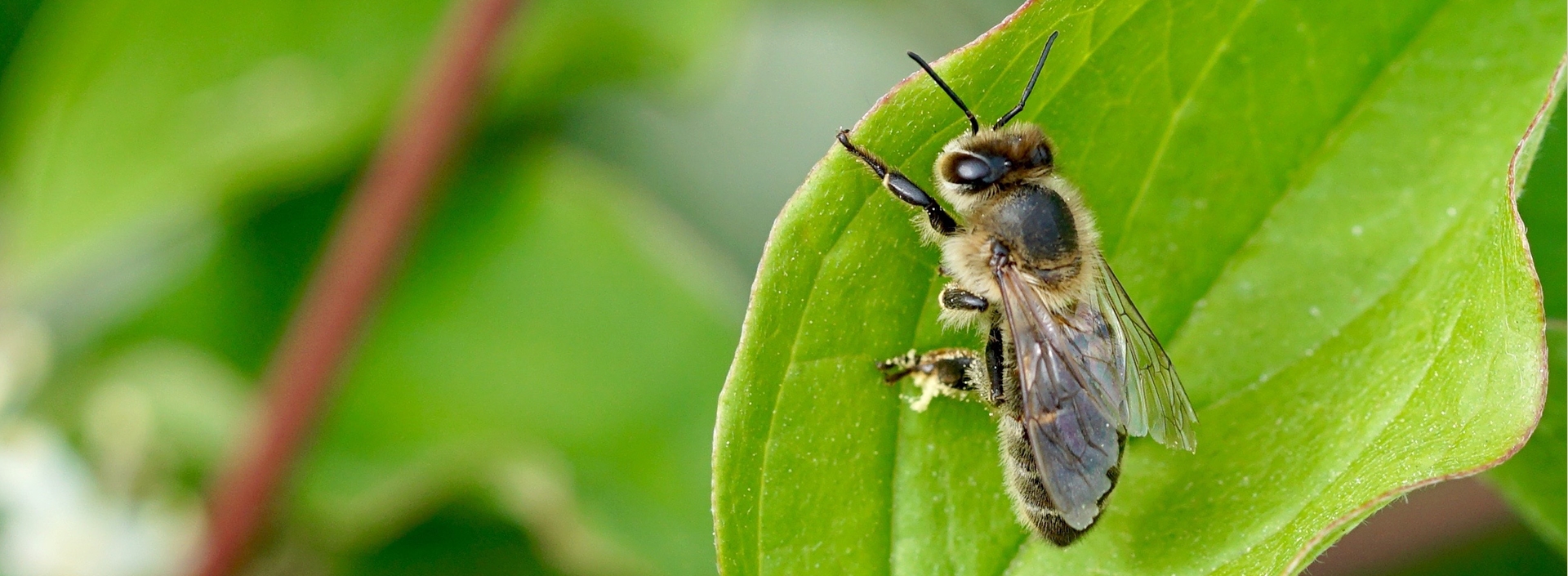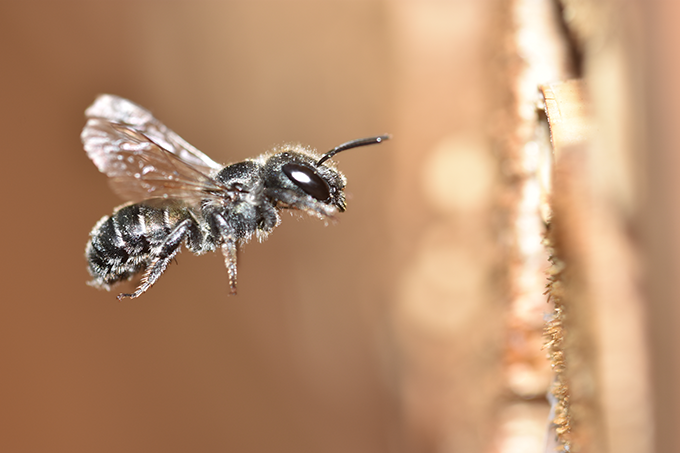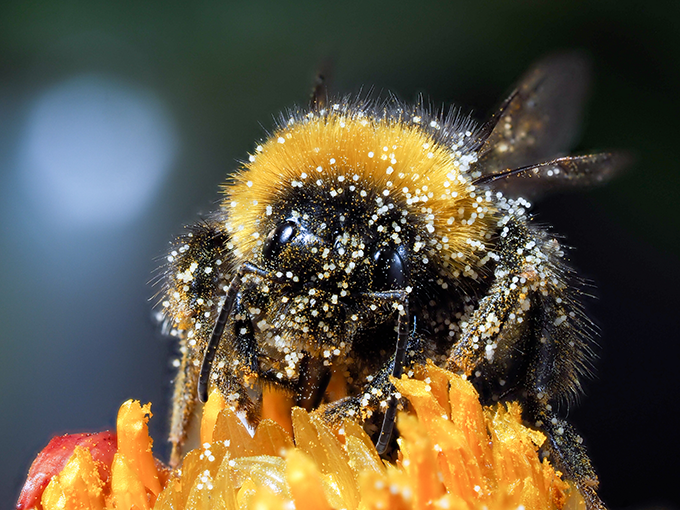One of my favorite things about gardening in my back yard is listening to the buzz of the bees as they come and go from the flowers or the bird bath, where they’ve stopped for a drink.
I’m a beekeeper, so the bees I hear and see most often are my own honey bees. They’re gentle and businesslike. I can usually tell by the tone of their humming if they’re content. They have a job to do, and I feel it’s part of my job to stay out of their way and just let them do it.

Like most beekeepers, I refer to these little visitors as “the girls,” since all of the honey bees we see on flowers are female worker bees. The queen is back in the hive laying eggs. The guys, the “drones,” are just waiting for the sun to rise high in the sky so they can take off and try to get a date with a virgin queen from a different hive. But that’s another story for another time.
The honey bees are far from alone!
My girls may be the most numerous pollinators in my garden, but I’m always happy to see the “other” bees… the natives. If I ask you to name some of those other bees, most people would say “bumble bees,” and they’d be right.
I’m convinced that the biggest, loudest bumble bees come to my garden. In fact, all Colorado gardeners are lucky to have nearly twenty different species of native bumble bees living here. Some are large. Some are small. But they’re all excellent pollinators and make terrific guests in the garden.
Many of these flying fur balls are particularly fond of larger flowers like penstemon. I always smile when I see a blossom moving on one of my penstemons. In a few seconds, I’ll see one of the big, hefty bumble bees emerge. It had crawled completely into the deep round tube-shaped flower. Aside from being strong and especially hairy (which is great for attracting pollen), bumblers have longer tongues than other bees and are especially good at reaching the nectar that lies deep inside blossoms.
But the bumble bees are just the beginning!
There are hundreds more native bees in Colorado in addition to our bumblers. Nearly 950 species of native bees are at home in our state! Like bumble bees, many of these other natives are plagued with some of the same pests and diseases that are challenging the honey bees and could use our help. People who want to support some of these remarkable natives don’t have to become beekeepers to see their fruit and veggie harvest improve. They can become native bee landlords!
Consider raising your own mild-mannered mason bees or leaf cutter bees by putting some simple native bee houses in your garden. Bee for bee, they’re better than honey bees, but they don’t live in big colonies, so the honey bees often get all the credit for pollination duties.
By giving these natives clean, safe nesting sites, mason bees and leaf cutter bees can begin to establish themselves in your garden and your neighborhood. Tagawa Gardens carries a variety of supplies to make raising native bees easy and fun.
Mason bees
Blue orchard mason bees get their name from the way they construct their nest. The queen gathers a pea-sized ball of pollen and nectar and inserts it deep into a tube-shaped hole. Inside the tube, she lays a single egg on top of the pollen “loaf.”
She repeats that process with additional eggs, working her way toward the entrance of the tube. As she goes, her masonry skills kick in as she builds a thin wall of mud to separate each chamber.
When the egg hatches, the larva feeds on the pollen and pupates inside the chamber through the winter. The adult bees emerge early the following spring, just in time to pollinate fruit orchards and other spring-blooming crops, and the process begins all over again.
Leaf Cutter Bees
The same sorts of houses that support mason bees also work for leaf cutter bees, which hatch later in the season, once daytime temperatures are consistently above 70 degrees. Like the mason bees, leaf cutters are prolific pollinators.

Leaf cutter bees get their name from their remarkable ability to cut perfect dime-sized circles in the edges of leaves. The missing bits of leaf may be clearly visible to the gardener, but don’t damage the plant in any way. Ideally, the missing bit of leaf is seen as living proof that one of Mother Nature’s most able architects has been ’round for a visit.
The bees carry the rolled up leaf discs back to their nests to line the “nursery” walls. Once several leaf circles are properly in place, the bee creates a pollen loaf, lays an egg and bundles it all up into a tiny package. Like the mason bees, the leaf cutter eggs will hatch, pupate for several months and emerge the following spring.
No stinging! No worries!
Mason bees and leaf cutter bees are as good as stingless. They have to be seriously provoked (as in grabbed) to sting. Even then, it will feel more like a mosquito bite than a bee sting. And the sting won’t trigger any significant reaction in people who are allergic to bees.
Our garden advisers at Dick’s Corner will gladly walk you through the in’s and out’s of raising these gentle bees in your garden. It’s a fascinating project… a great way to capture the imagination of kids… and help out these remarkably beneficial insects in the process!







